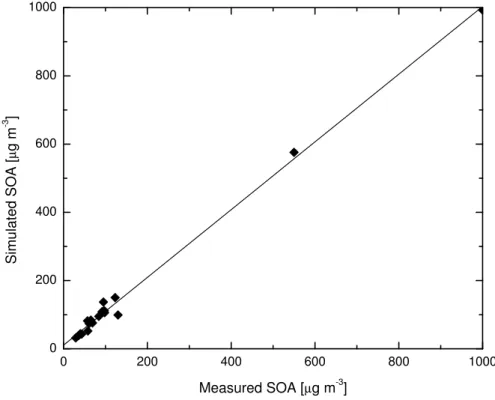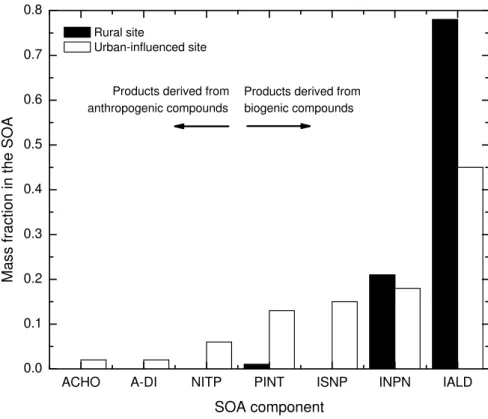Development of a secondary organic aerosol formation mechanism: comparison with smog chamber experiments and atmospheric measurements
Texto
Imagem




Documentos relacionados
Secondary organic aerosols (SOA), formed by gas-to-particle conversion of oxidized vapors, and other oxygenated organic aerosols formed by chemical ageing of existing particles
T.: Particle mass yield in secondary organic aerosol formed by the dark ozonolysis of alpha-pinene, Atmos. T.: Loading-dependent
The effect of photochemical ageing and initial pre- cursor concentration on the composition and hygroscopic properties of secondary organic aerosol (SOA) formed dur- ing the
Monthly-mean concentrations of inorganic aerosol are higher with RACM2 than with CB05 ( + 16% for sulfate, + 11% for nitrate, and + 12% for ammo- nium), whereas the concentrations
Their maximum aerosol yield is calculated by the slope of the increase of aerosol mass with decrease in precursor organic species in environmental chamber experiments.. Mart´
The experimental data obtained for the particle number concentration are pre- sented together with the simulated profile of 2,5-DHF (from the known initial concentrations and
Secondary organic aerosol formation from photochemical aging of light-duty gasoline vehicle exhausts in a smog chamberT.
We have built the largest indoor smog chamber in China, and initial characterization experiments described in this pa- per demonstrate that our GIG-CAS smog chamber facility can be